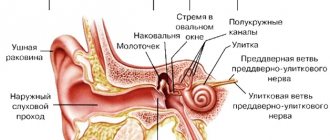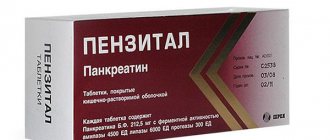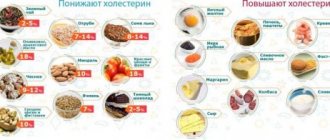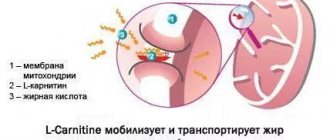| Service | Price |
| ADS-M (prevention of Diphtheria, Tetanus) | 320 rub. |
Diphtheria and tetanus are two diseases that have been well known for a long time. Both are caused by pathogenic bacteria and were quite common before compulsory vaccination campaigns began.
Loeffler's bacillus, also known as Corynebacterium diphtheria, is the causative agent of diphtheria. With this disease, the oral cavity, pharynx, larynx, skin, bronchi, and other parts of the body are affected.
The bacterium Clostridium tetani causes tetanus, an acute disease that affects the nervous system.
The ADS-M vaccine is a multicomponent, specially processed drug. Its administration will not cause negative consequences, intoxication or the occurrence of an infectious disease. After vaccination, the immune system learns to recognize and effectively fight the pathogens of tetanus and diphtheria. A vaccinated person cannot become infected with these serious diseases.
Pharmacodynamics and pharmacokinetics
It should be noted that the ADS-M vaccination means: diphtheria-tetanus toxoid in small doses. It is also a variation of the DTP vaccine , but without the pertussis component.
The basis of the vaccine is a mixture of substances that have undergone special treatment. They do not cause severe toxic reactions or infectious diseases, but form an immunological reaction. It is this reaction that is the basis of the principle of action of this vaccination, thanks to which stable immunity to tetanus and diphtheria .
This vaccine is used for revaccination in adult patients and children aged 4-6 years who previously received the DPT vaccine. Therefore, in this case, the ADSM vaccination does not so much build immunity as maintain the level of antibodies at the required level.
Also, this drug is intended for children with intolerance to the pertussis component, which is contained in DTP and ADS vaccinations, for the purpose of emergency immunization, for example, according to epidemic indications.
Features of the drug
ADSM is a drug that protects against two diseases at once thanks to the diphtheria and tetanus toxoids it contains. The letter M in the name reflects a feature of the drug - a reduced dosage of antigens. Due to this, the likelihood of negative reactions is reduced.
The drug is similar in composition to another vaccine - DPT. Unlike it, it does not contain a pertussis component. Therefore, it is mainly used for revaccination of adults. The vaccine is also used to protect children, if there are certain indications. Our clinic uses the Canadian vaccine Adasel. It is designed specifically for revaccination of adults. It is characterized by a reduced number of antigens, which ensures an almost complete absence of adverse reactions.
Indications for use
Vaccination with ADS-M for children over 6 years of age and adult patients is recommended as a prophylaxis against diphtheria and tetanus.
This vaccine is also indicated for adult patients over 18 years of age with:
- primary vaccination;
- carrying out systematic revaccination against diphtheria and tetanus. The vaccine contains a reduced dosage of diphtheria toxoid to reduce the risk of developing possible hypersensitivity reactions;
- the threat of tetanus due to injury.
When is the ADSM vaccine given?
The timing of the administration of the ADSM vaccine is affected by the DTP vaccination.
If it was done on time, doctors adhere to the national vaccination schedule and prescribe injections:
- at 6 years of age (or at 4 years of age), when r2 ADSM is given, or a second revaccination.
- at 16 years of age (or at 14 years of age), when r3 ADSM, or the third revaccination, is given. It is very important that exactly 10 years pass between two injections.
There is also another scheme. It is used when a child does not tolerate the DTP vaccine well . According to it, the ADSM vaccine is administered into:
- 3 months;
- 4.5 months;
- 6 months;
- 1.5 years;
- 6 years;
- 16 years.
After this, you need to be vaccinated every 10 years, since that is exactly how long the formed immunity lasts.
In addition, ADSM vaccination can be prescribed if an unvaccinated child has been in contact with a patient with diphtheria to form emergency immunity.
Side effects
This drug is characterized by low reactogenicity, but the likelihood of adverse reactions should not be excluded.
It has been established that the side effects of vaccinations in adults and children can be general or local. They usually appear within 1-2 days from the moment of administration.
Local reactions include: redness, induration, loss of sensitivity and swelling at the site where the vaccine is given.
Common side effects are: fever , moodiness, lethargy, loss of appetite and digestion.
The appearance of such symptoms after vaccination is considered normal and does not require treatment, although the use of Ibuprofen or Paracetamol . Experts also recommend drinking plenty of fluids.
Severe complications of ADS-M vaccination occur infrequently, but they can manifest themselves as anaphylactic shock, Quincke's edema, encephalitis, and meningitis.
Contraindications
This type of vaccination is not carried out if a person has previously had a pronounced negative reaction to the components of the drug. Other contraindications include:
- Any infectious diseases. Immunization is permissible only 2-4 weeks after recovery.
- Severe neurological symptoms.
- Immunodeficiency conditions, including HIV and AIDS.
- Malignant neoplasms.
- Allergic reactions. Vaccination is permissible only 2-4 weeks after an allergy exacerbation.
- Severe post-vaccination complications after a previously administered ADS vaccine.
Vaccine ADS-M instructions for use (Method and dosage)
As the instructions for the ADS-M vaccine show, it is administered intramuscularly. A suitable place for its insertion in children is the anterolateral part of the thigh, under the shoulder blade or in the shoulder area.
Revaccination of children is performed at 14-16 years of age and its effect lasts for 10 years.
After 10 years, adult patients are vaccinated with ADS-M, which will help maintain immunity at the required level against tetanus and diphtheria. Then revaccinations are carried out at 10-year intervals. However, no upper age limit has been established.
Introduction Features
ADSM vaccination for patients in Moscow, Solntsevo, Peredelkino Nizhny, Vnukovo is administered intramuscularly in the manipulation room. Before the injection, the patient must be examined by a therapist. If necessary, a consultation with an immunologist will be scheduled.
After vaccination, discomfort at the injection site and a short-term increase in temperature are possible. This is a normal phenomenon, so it is better to spend 2-3 days after the injection at home, in a calm environment, without exposing the body to physical and mental stress.
special instructions
Intravenous injection into the buttock is unacceptable, as this may damage the sciatic nerve or blood vessels.
Carrying out immunosuppressive treatment or having an immunodeficiency can reduce the intensity of the immune response to the vaccine. Therefore, it is necessary to complete the therapy or ensure complete safety for the patient. Vaccinations can be given to people with chronic immunodeficiency when a concomitant disease does not prevent the formation of even a small level of antibodies.
Where is ADSM vaccination given?
Traditionally, ADSM vaccination is given intramuscularly. The most common injection site is the thigh, shoulder, or area under the shoulder blade.
The choice of the optimal one depends on the age and structure of the human body. For children with undeveloped muscle mass, the injection is given in the thigh, since in this place the muscles come close to the skin. And they are considered better developed than the others.
If there is a well-developed muscular frame, preference is given to the shoulder.
under the shoulder blade in the case of an existing subcutaneous fat layer that blocks access to muscles in other areas.
Why is ADSM done intramuscularly? Because in this case, the drug will enter the blood gradually, provoking the desired reaction of the immune system. If it enters the blood completely and immediately, the immune system will react instantly and simply destroy it. And with it the hope of developing the body’s immunity to infections and protecting against them.
Analogs
Level 4 ATC code matches:
Diphtheria-Tetanus toxoid
Tetanus toxoid
There is an imported vaccine Imovax D.T.Adult , which is better tolerated and does not lead to the development of unwanted reactions.
There are also monovalent vaccines , that is, separately for diphtheria - AD and tetanus - AS.
Difference between DTP and ADS-M
There are great similarities between DPT and ADS-M vaccinations. But DTP additionally contains a component that is directed against whooping cough.
ADS-M vaccination is recommended for adult patients and children over 4 years of age for vaccine administration or revaccination, since for this age a disease such as whooping cough is no longer dangerous.
However, in children under 4 years of age, everything is completely different - whooping cough is not only a dangerous disease, but can also be fatal. This disease can develop at lightning speed. And if an adult may have a prolonged cough, then in children a spasm of the respiratory muscles may occur, leading to a sudden stop in breathing. Only immediate resuscitation measures will help save life.
Symptoms of diphtheria and tetanus, what to look for
Both bacteria belong to the pathogenic group of microorganisms that can cause acute infectious diseases. Therefore, an infected person should be immediately isolated to reduce the risk of spreading the infection. You can also become infected with tetanus through contact with sick animals.
Symptoms to look out for so you can take immediate action:
- general weakness of the body, high temperature, enlarged lymph nodes;
- sore throat, difficulty swallowing, swelling of the neck and laryngeal tissues;
- enlarged tonsils and congestion of the pharyngeal mucosa;
- plaque on the tonsils, mucous membrane and adjacent tissues.
Diseases and their complications can cause death, can paralyze the neck muscles, increase the load on the heart and disrupt the functioning of the nervous system.
The following symptoms are typical for tetanus:
- fever, severe weakness;
- muscle tension and spasms throughout the body, especially in the face;
- difficulty breathing;
- spasms that can cause asphyxia and lead to death.
Reviews of the ADS-M vaccine
One of the most discussed topics on parenting and medical forums is vaccination. According to some parents, vaccinations are a necessity, and they find it strange that anyone would even doubt it. Others believe that vaccinations are dangerous to health and the body as a whole. Therefore, disputes about them can continue endlessly.
It should be noted that reviews of the ADS-M vaccine are quite common. They are largely related to the body’s reaction to vaccination. Patients often report experiencing unwanted symptoms after the procedure. For example, some are concerned about pain and an increase in temperature up to 38 degrees. In this case, the temperature rises especially often and usually occurs in the evening or the next day after vaccination. Sometimes this lasts for at least a week. In addition, muscle pain may occur.
You can also find reports where injections were given to patients after receiving wounds to prevent tetanus. As a result, lumps and skin irritations may appear.
Among all the discussions, questions arise: what does the ADS-M vaccination help against and what is it needed for? In addition, many adults do not know that after 14-16 years it needs to be given every 10 years, and for them this was a real discovery.
In most cases, side effects last 1-2 days. But it happens when it lasts longer. Then medical intervention and medication may be required. Of course, you should not abuse the use of tablets on your own, as this can further complicate the condition. It is best to consult a doctor immediately.
Recommendations after vaccination
If the child’s general well-being is not affected, it is not necessary to change the daily routine. Walking is not contraindicated, just like going to school or going to kindergarten. There is no need to wet the injection site only on the day of vaccination. But you should refrain from playing sports for three days.
For two weeks, also avoid visiting public places: your immune system is still “distracted” by important work, and it does not need additional stress. But this does not mean that the immune system needs to be “helped” by wrapping and overheating the child. Such “additional” measures will only do harm.
If after the ADSM vaccination the injection site (leg or arm) hurts, you do not need to see a doctor. This is a normal reaction to mechanical damage to tissue when inserting a needle and drug. The pain will go away within one to two days. In rare cases, they can persist for up to a week.
Types of vaccines
Based on their ability to develop immunity to one or more pathogens, all vaccines are divided into mono- and associated. The former provide protection against one disease. The second - from several (example: whooping cough, tetanus, diphtheria). In particular, polio prevention can be carried out either in parallel with DTP vaccination or be included in the complex immunization program with one drug. It all depends on the manufacturer.
BiVac Polio (Russia)
Monovaccine intended for the prevention of polio.
It includes the pathogen virus (attenuated Sabin strains type 1, type 3), magnesium chloride, kanamycin - no more than 30 µg per 1 dose of the drug. Statistics indicate that the presented drug has a high degree of seroconversion. Thus, in particular, stable immunity to the disease is developed in 90–95% of patients who have successfully completed the vaccination procedure. BiVac Polio can be used in conjunction with DTP (vaccination of the patient with ADS or ADS-M toxoid). The possibility of using the drug with other vaccines included in the list of approved NKPP is allowed. Each case is considered individually. It should be remembered that immunosuppressants can reduce the immune response to OPV vaccination. They can also cause the virus to multiply and increase the time it is excreted in feces.
Immunization with BiVac Polio can be carried out from 6 months. Before this, polio prevention involves the use of IPV (inactivated vaccine with destroyed virus particles). Vaccination with such a drug is permissible only for healthy patients. It is strictly prohibited to use it as part of the prevention of polio in pregnant women, patients with neurological disorders and immunodeficiency conditions, and children at risk.
ADS (Russia)
A two-component vaccine used to prevent diphtheria and tetanus.
It contains toxoids of the above-mentioned diseases, as well as auxiliary substances. Characterized by the absence of a pertussis component, ADS is considered a weakly reactogenic drug. In some vaccinated people, it can cause general and local reactions. In exceptional cases, it can cause an exacerbation of an allergic disease. ADS is allowed to be administered in parallel with the administration of other NKPP vaccinations. The main thing is not to mix it in the same syringe with other drugs for parenteral administration. Taking immunoglobulin does not affect the prevention of diseases with such a vaccine. It is also possible to carry out immunization with the parallel use of maintenance doses of steroids.
The DTP vaccination can be given from 3 months of age (if there are contraindications to DPT and developed immunity to the whooping cough virus). If a young patient has not been vaccinated against diphtheria and tetanus, the option of vaccinating him with this drug up to 6 years is allowed. Afterwards, prevention of the above diseases is carried out using ADS-M toxoid. Temporary reasons for medical withdrawal from such vaccination include diseases of infectious and non-infectious etiology, chronic diseases in the acute stage. It is strictly forbidden to administer the ADS vaccine in case of severe adverse reactions or post-vaccination complications caused by the patient’s primary immunization.
DTP (Russia)
A three-component vaccine aimed at combating whooping cough, diphtheria and tetanus.
It contains the causative agents of the above diseases, as well as aluminum hydroxide, thiomersal - no more than 57.5 µg per dose of the drug. A vaccination course with this drug consists of three vaccinations. Upon completion, the vaccinated person develops a stable specific immunity (subject to compliance with the schedule approved by the NKPP). DPT can be administered in parallel with the polio vaccine. It is also allowed to be used in conjunction with the prevention of other NKPP diseases. An exception is BCG (prevention of tuberculosis). If a young patient has not received a vaccination using this drug before the age of 4 years, it is not given. As an alternative, children under 6 years of age are immunized with ADS-toxoid, and older adults with ADS-M-toxoid.
The minimum age for primary DTP vaccination is 3 months. Revaccination is performed when the patient is 4.5 months old. Next - in six months. Contraindications to the use of such a drug include diseases of the nervous system in the progression stage, a history of afebrile convulsions. Its use is not allowed in case of sensitivity to the components of the immunobiological drug, accompanied by severe reactions (hypermia over 3 cm in diameter, fever up to 39°C).
Pentaxim (France)
Associated vaccine to protect the body from whooping cough, diphtheria, tetanus, polio, hemophilus influenzae infection. It contains the causative agents of all the above diseases and auxiliary substances. According to statistics, this type of drug shows high seroconversion rates. So, in particular, antibodies to diphtheria and tetanus are observed in 100%, to polio – in 99%, to whooping cough and hemophilus influenzae infection – in 88% of the vaccinated population.
The possibility of joint use of Pentaxim with other immunobiological drugs does not have reliable data. The only thing it suggests is that it should not be allowed to be mixed with other NCPP vaccines. You should know: within 1–2 weeks after receiving such a vaccination, a urine test may give a positive reaction to the Haemophilus influenzae virus. Taking this into account, other methods of diagnosing the disease in question should be used.
Vaccination with Pentaxim can be carried out from 2 months. Further, vaccination with such a drug will be given according to an individually approved immunization schedule: 2-3-4, 2-4-6 or 3-4-5 (according to the recommendations of the attending physician). The vaccine should be used with caution in patients with brachial neuritis and Guillain-Barré syndrome. Its use for immunization of children with progressive encephalopathy or intolerance to the components of the drug is prohibited.








